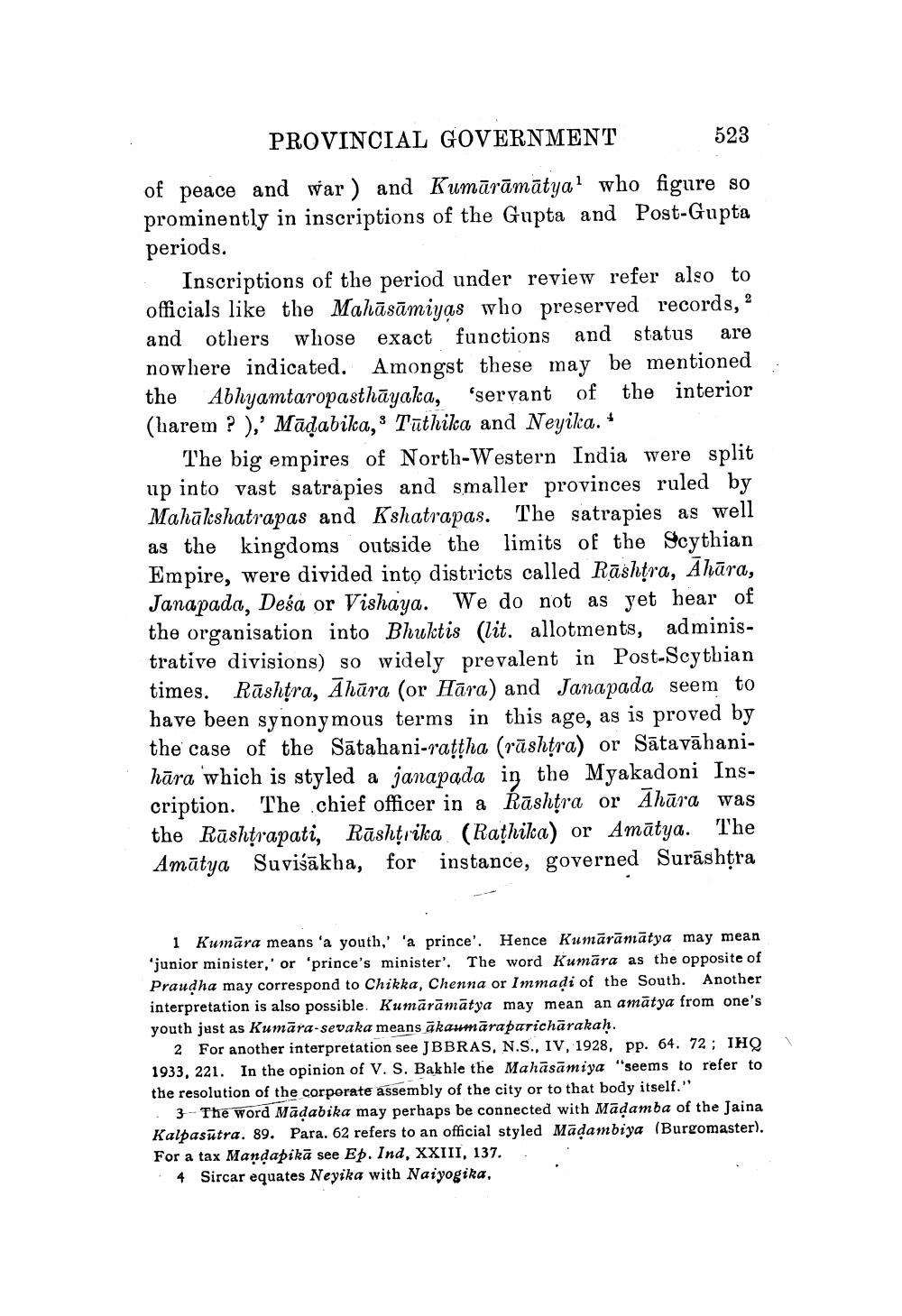________________
PROVINCIAL GOVERNMENT 523 of peace and war ) and Kumārāmātya? who figure so prominently in inscriptions of the Gupta and Post-Gupta periods.
Inscriptions of the period under review refer also to officials like the Mahāsāmiyas who preserved records, 2 and others whose exact functions and status are nowhere indicated. Amongst these may be mentioned the Abhyamtaropasthāyaka, 'servant of the interior (harem ? ),' Mādabika,: Tüthika and Neyika.
The big empires of North-Western India were split up into vast satrapies and smaller provinces ruled by Mahāleshatrapas and Kshatrapas. The satrapies as well as the kingdoms outside the limits of the Scythian Empire, were divided into districts called Rashtra, Ahāra, Janapada, Deśa or Vishaya. We do not as yet hear of the organisation into Bhuktis (lit. allotments, administrative divisions) so widely prevalent in Post-Scythian times. Rāshțra, Āhūra (or Hāra) and Janapada seem to have been synonymous terms in this age, as is proved by the case of the Sātahani-rattha (rūshtra) or Sātavāhanihāra which is styled a janapada in the Myakadoni Inscription. The chief officer in a Rāshtra or Ahāra was the Rāshtrapati, Rāshtrika (Rathika) or Amātya. The Amātya Suvišākha, for instance, governed Surāshtra
1 Kumāra means 'a youth,' 'a prince'. Hence Kumārāmātya may mean "junior minister,' or 'prince's minister'. The word Kumāra as the opposite of Praudha may correspond to Chikka, Chenna or Immadi of the South. Another interpretation is also possible. Kumārāmātya may mean an amātya from one's youth just as Kumāra-sevaka means akaumāraparichārakah
2 For another interpretation see JBBRAS, N.S., IV, 1928, pp. 64. 72; HQ 1933, 221. In the opinion of V. S. Bakhle the Mahāsāmiya "seems to refer to the resolution of the corporate assembly of the city or to that body itself." • 3 - The word Madabika may perhaps be connected with Mādamba of the Jaina Kalpasūtra. 89. Para. 62 refers to an official styled Madambiya (Burgomaster). For a tax Mandapikā see Ep. Ind, XXIII, 137. . . 4 Sircar equates Neyika with Naiyogika,




